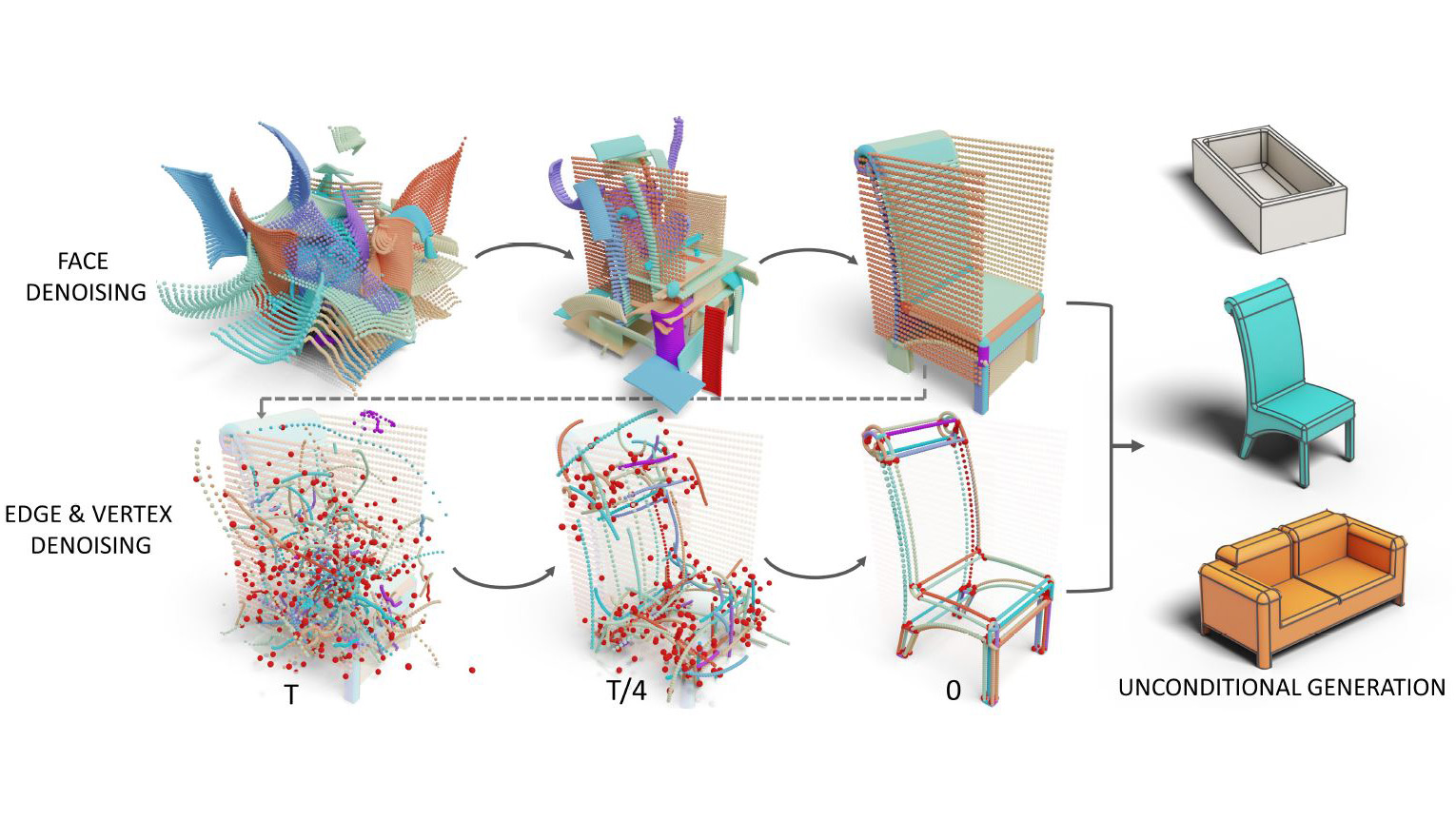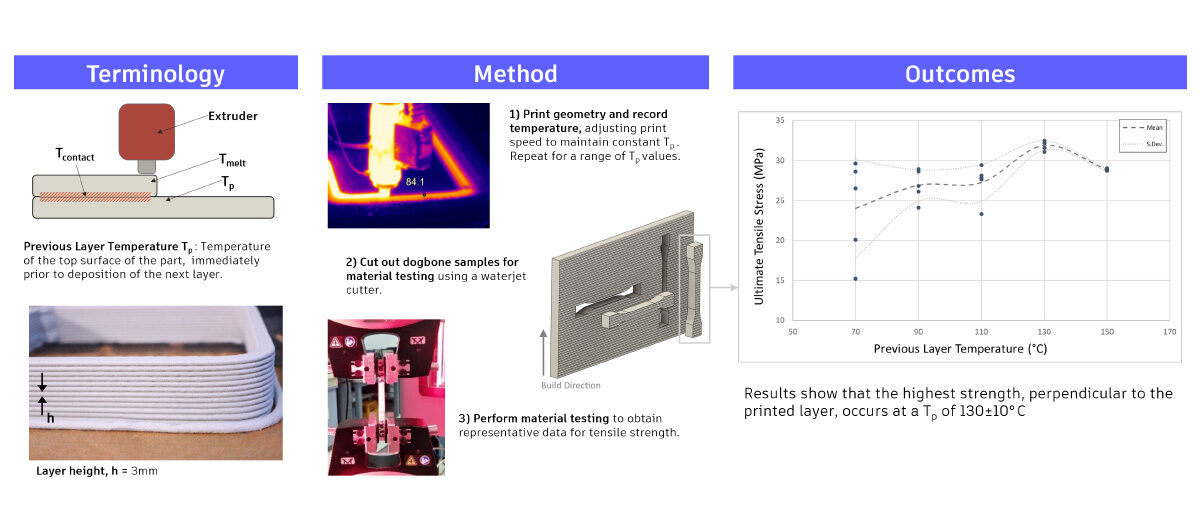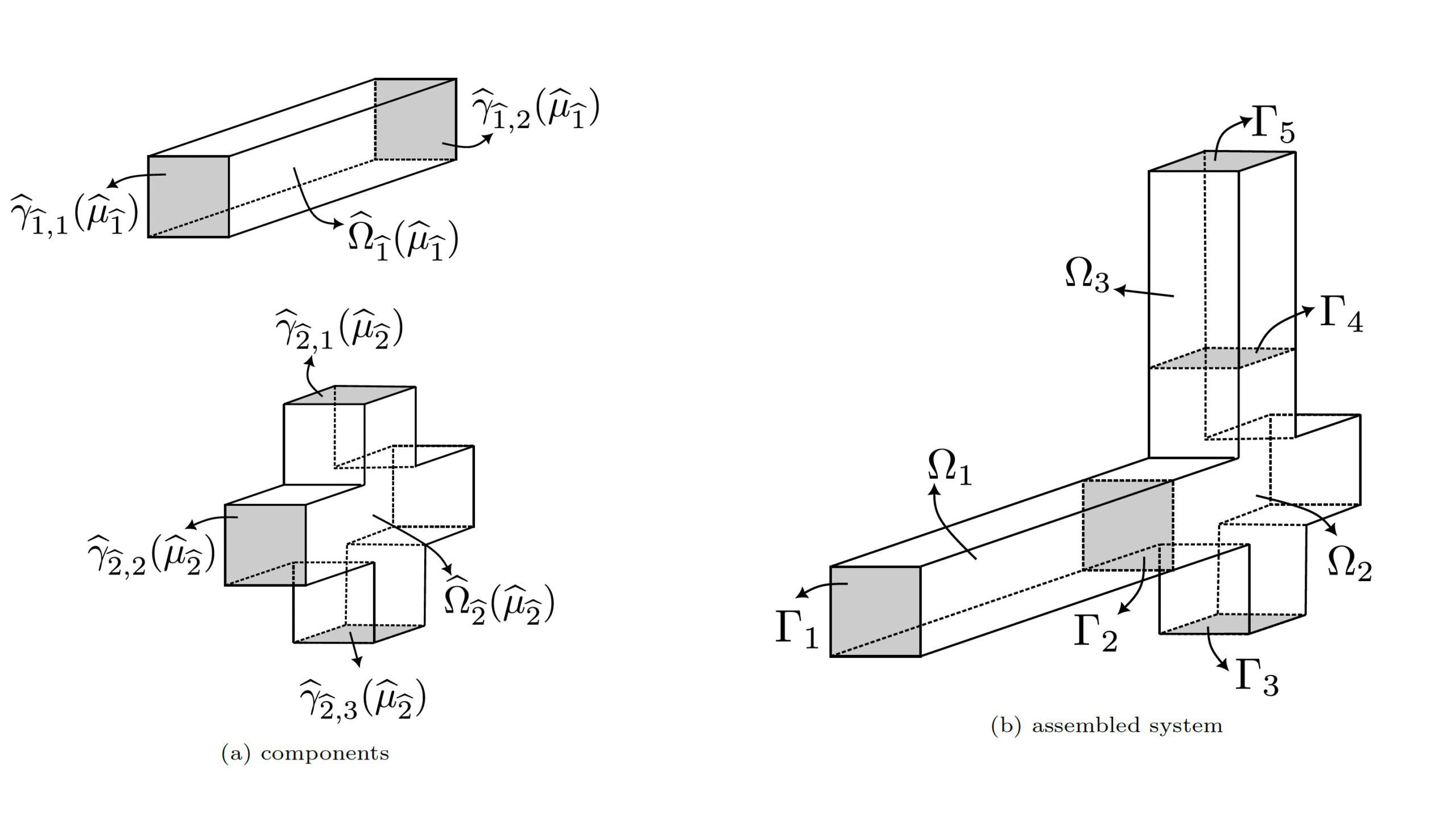Recently Published by Autodesk Researchers
Autodesk Research teams regularly contribute to peer-reviewed scientific journals and present at conferences around the world. Check out some recent publications from Autodesk Researchers.
Brep Gen: A B-rep Generative Diffusion Model with Structured Latent Geometry
BrepGen is a diffusion-based generative approach that directly outputs a Boundary representation (B-rep) Computer-Aided Design (CAD) model. Extensive experiments show that BrepGen advances the task of CAD B-rep generation, surpassing existing methods on various benchmarks. The team’s work on a newly collected furniture dataset further showcase its exceptional capability in generating complicated geometry. While previous methods were limited to generating simple prismatic shapes, BrepGen incorporates free-form and doubly curved surfaces for the first time. Additional applications of BrepGen include CAD autocomplete and design interpolation.
This study investigates the effect of the temperature at the interface between layers on the ultimate tensile strength (UTS) of 3D printed parts made with post-industrial PETG (PIPG). Fiber-reinforced polymers are gaining popularity in large-scale material extrusion, which involves the layer-by-layer deposition of melted polymeric granulates. This study identifies an optimal previous layer temperature (Tp) of 130±10°C, where interlayer bonding and material properties are maximized. An upper limit of 150°C is identified to avoid material sagging and a critical lower bound of approximately 113°C for achieving at least 80% of the maximum part strength. Moreover, the study underscores the importance of considering the effective cross-sectional area due to the ridged surface of printed samples.
In this paper, the team introduces a hyperreduced reduced basis element method for model reduction of parameterized, component-based systems in continuum mechanics governed by nonlinear partial differential equations. In the offline phase, the method constructs, through a component-wise empirical training, a library of archetype components defined by a component-wise reduced basis and hyperreduced quadrature rules with varying hyperreduction fidelities. In the online phase, the method applies an online adaptive scheme informed by the Brezzi–Rappaz–Raviart theorem to select an appropriate hyperreduction fidelity for each component to meet the user-prescribed error tolerance at the system level. The method accommodates the rapid construction of hyperreduced models for large-scale component-based nonlinear systems and enables model reduction of problems with many continuous and topology-varying parameters.
Get in touch
Have we piqued your interest? Get in touch if you’d like to learn more about Autodesk Research, our projects, people, and potential collaboration opportunities
Contact us

